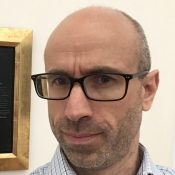Decaying Belgian Congo–era maps reveal secrets of valuable African tree
In the dusty library of a research station on the Congo River, a decaying map holds secrets to saving an endangered tree treasured for decades by boat builders and furniture makers.
A favorite of mid-century designers like Wendell Castle, lumber from the hard-to-find Afrormosia tree (Pericopsis elata) is prized for its color, hard-wearing properties and ability to resist termites and harsh weather. The next time you tread on a rich golden-brown wood floor or are cruising in a vintage wooden sailboat, take a closer look – it could very well be made of Afrormosia.
But deep in the Yangambi Man and Biosphere Reserve in northern Democratic Republic of Congo (DRC), a lone sentinel of peeling reddish-brown bark highlights the species’ current problem: there are no saplings to be seen.
The Reserve covers about 250,000 hectares of tropical forests, home to a multitude of tree and animal species. Like many Central and West Africa forest areas, it faces pressure from expanding agriculture, exploitation of forest products (including for energy) and small-scale mining practiced by local communities and professional operators alike.
Though certainly not the only endangered species within Yangambi and further afield, the Afrormosia still stands out. It grows to heights of 60 meters and has perplexed foresters for decades with an apparent inability to reproduce efficiently under its closed canopy. This unusual and potentially dangerous trait piqued the interest of Brice Djiofack, a Cameroonian graduate student of forestry engineering at the Catholic University of Louvain.
Djiofack spent months of sweaty work swarmed by miniature bees in Yangambi counting plots and walking the tracks where Belgian researchers had planted Afrormosia in the mid-twentieth century. His guide? The records the researchers left behind in the library of the Yangambi Research Station, once the world’s largest tropical agricultural research institute before being downsized following the country’s independence in 1960.
By using modern geographic information technology along with the delicate historical maps discovered in the institute’s modernist-era library, Djiofack is hoping to re-learn techniques the Belgians used to grow the tree.
“There are some populations of trees that still exist mainly in Cameroon and the DRC,” says Djiofack. “Even with these pockets, regeneration of these trees is difficult. Here in Yangambi we’ve found ways to support natural regeneration. The mystery is that these approaches are not detailed, and we’re trying to properly describe them.”
Preliminary results suggest the tree does not require sunlight throughout all of its growth phases. This means that a variety of approaches rather than a single technique will be required to grow healthy stands of trees, Djiofack says.
Djiofack is being helped in his work by scientists from Belgium’s Royal Museum for Central Africa and the Center for International Forestry Research (CIFOR), as part of the EUR 27 million Training, Research, and Environment in the Tshopo (Province) project – which goes by the acronym FORETS – funded by the European Union to protect the Yangambi Reserve and support sustainable development in the region.
“DRC has the largest extent of tropical forests in Africa and also one of the largest and fastest-growing populations,” says CIFOR Director General Dr. Robert Nasi. “Forestry needs to cater to both, and there is great need of well-trained people. This is what we are doing in Kisangani and Yangambi with our Congolese and international partners, supported by the European Union.”
In line with this, discovering the secret to growing Afrormosia also means a chance for forest communities across the region to develop sustainable silvicultural practices and meet the growing demand for tropical wood in a way that protects the fragile ecology under threat from surging populations and deforestation – and, ultimately, helps the Afrormosia regenerate for generations to come.
This research was supported by funding from EuropeAid.

We want you to share Forests News content, which is licensed under Creative Commons Attribution-NonCommercial-ShareAlike 4.0 International (CC BY-NC-SA 4.0). This means you are free to redistribute our material for non-commercial purposes. All we ask is that you give Forests News appropriate credit and link to the original Forests News content, indicate if changes were made, and distribute your contributions under the same Creative Commons license. You must notify Forests News if you repost, reprint or reuse our materials by contacting forestsnews@cifor-icraf.org.














